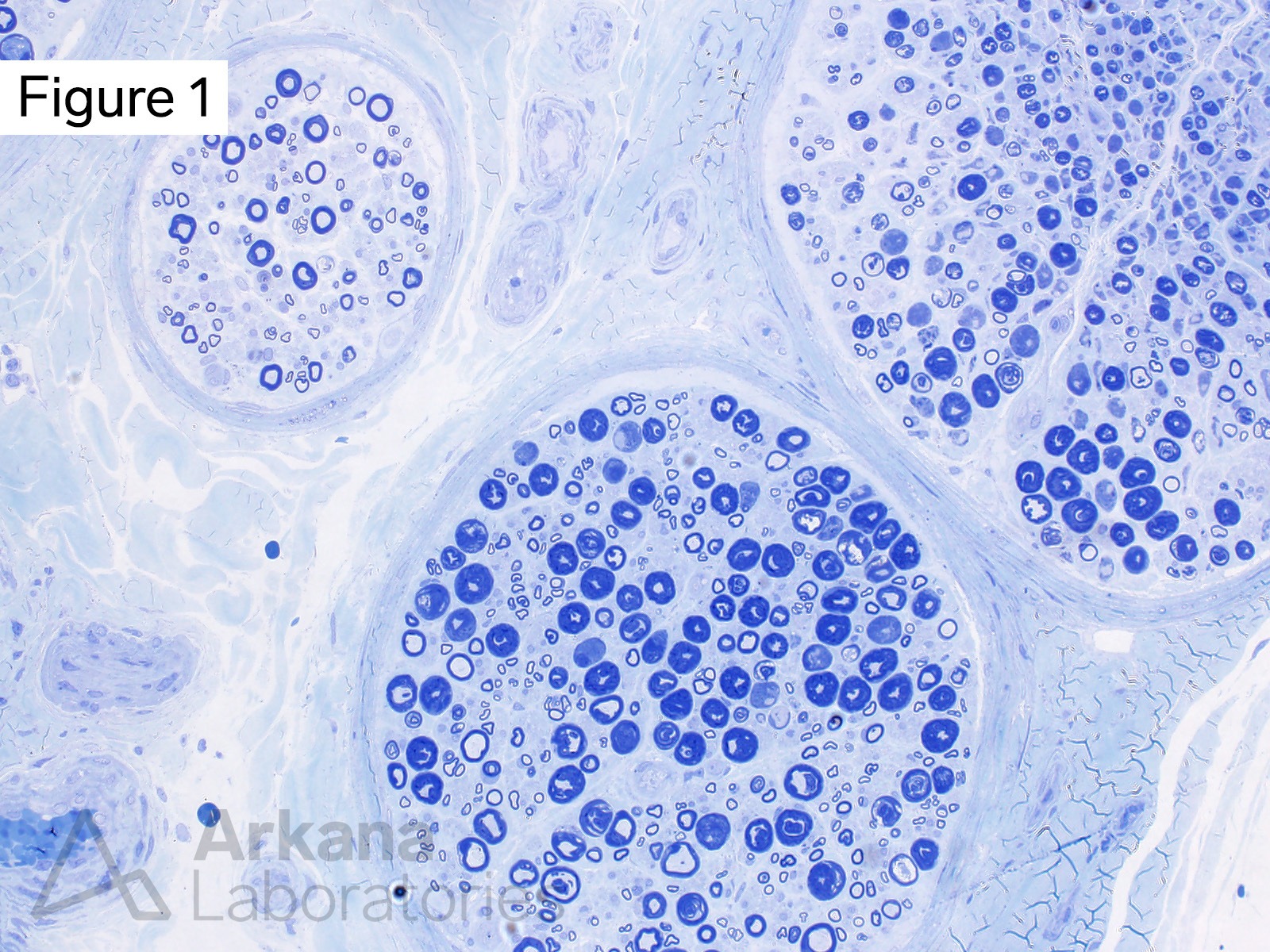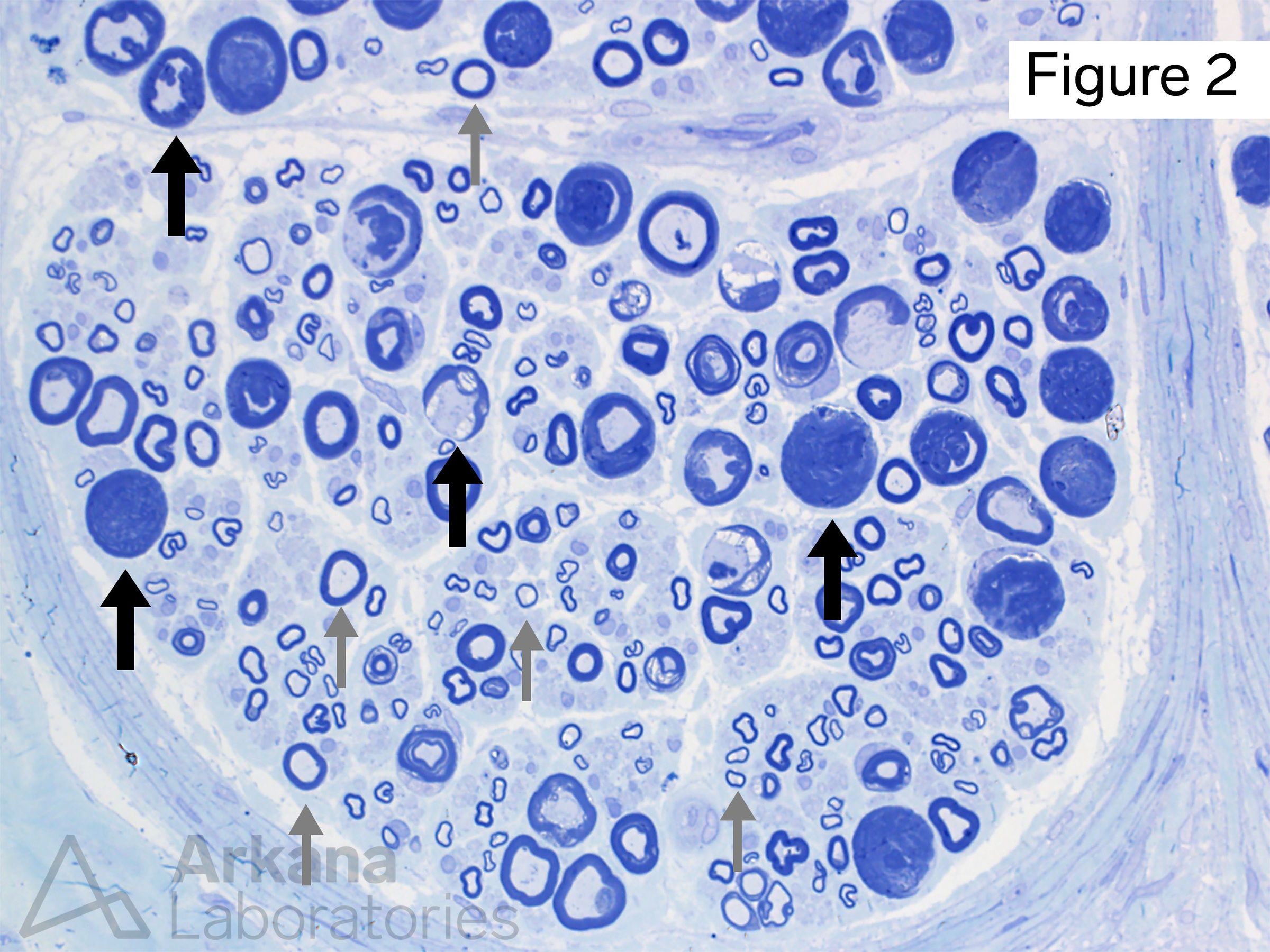
This 57-year-old patient presented with a left foot drop of several weeks duration. Laboratory studies showed elevated ESR, and negative/normal CRP, ANA, SSA, SSB, and ANCA. The patient was treated with steroids prior to nerve biopsy and reported subjective improvement in their strength.
What is the nature of the structures in Figure #2 indicated by arrows?
A. Artifact
B. Degenerating axons
C. Tomacula
D. Onion bulbs
Answer: Artifact
These changes represent partial crush and/or traction artifact. These alterations may mimic degenerating axons or tomacula. “Onion bulbs” represent redundant wraps of Schwann cells around a myelinated axon caused by multiple rounds (i.e. repetitive cycles) of demyelination and remyelination, and do not have this appearance.
References/Additional Reading
Mathis S, Magy L, Le Masson G, Richard L, Soulages A, Solé G, Duval F, Ghorab K, Vallat JM, Duchesne M. Value of nerve biopsy in the management of peripheral neuropathies. Expert Rev Neurother. 2018 Jul;18(7):589-602. doi: 10.1080/14737175.2018.1489240. Epub 2018 Jun 25. PMID: 29923431.
Chkheidze R, Pytel P. What Every Neuropathologist Needs to Know: Peripheral Nerve Biopsy. J Neuropathol Exp Neurol. 2020 Apr 1;79(4):355-364. doi: 10.1093/jnen/nlaa012. PMID: 32167544.
Quick note: This post is to be used for informational purposes only and does not constitute medical or health advice. Each person should consult their own doctor with respect to matters referenced. Arkana Laboratories assumes no liability for actions taken in reliance upon the information contained herein.


